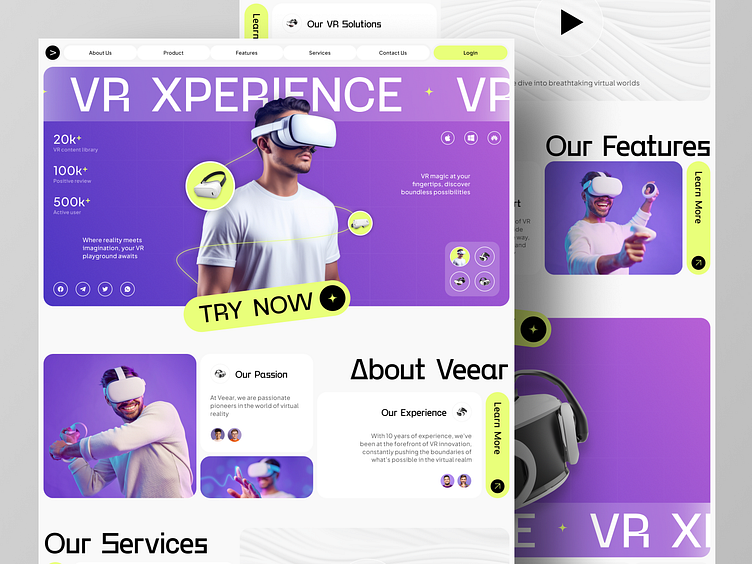The future is no longer just digital—it’s immersive. In 2025, Virtual Reality (VR) and Augmented Reality (AR) are no longer buzzwords or niche technologies. They are powerful tools transforming how we learn, work, play, and interact with the world around us. From entertainment and education to healthcare and retail, VR and AR are reshaping experiences in every corner of society.

What’s the Difference Between VR and AR?
Before diving into trends, let’s clarify:
-
Virtual Reality (VR) fully immerses users in a computer-generated environment. You wear a headset and are transported to a different world—real or imagined.
-
Augmented Reality (AR) overlays digital elements (like graphics, sounds, or data) onto the real world, usually through smartphones, tablets, or AR glasses.
VR in 2025: Deeper Immersion, Greater Impact
In 2025, VR has moved far beyond gaming. It’s becoming an essential tool across industries:
-
Education & Training: Medical students perform virtual surgeries. Factory workers learn in simulated environments without real-world risks.
-
Therapy & Wellness: VR is used for exposure therapy, pain management, and mindfulness training.
-
Remote Collaboration: Virtual offices and meeting spaces allow global teams to brainstorm and interact in 3D environments—feeling present without being physically together.
With improvements in hardware (lighter headsets, better resolution, wireless freedom), VR is more accessible and immersive than ever.
AR in 2025: A Digital Layer Over Reality
AR is quietly revolutionizing the everyday:
-
Retail: Try on clothes, makeup, or furniture virtually before buying. AR enhances customer experience and reduces returns.
-
Navigation & Travel: AR glasses offer real-time directions, translations, and points of interest while walking or driving.
-
Healthcare: Surgeons use AR overlays during procedures for real-time data visualization, improving precision and outcomes.
-
Workplace Productivity: AR helps workers on factory floors or in warehouses access information hands-free, boosting efficiency.
Apple’s Vision Pro and other mixed reality headsets are pushing AR into mainstream adoption, blending physical and digital worlds seamlessly.
The Merge: Mixed Reality (MR) and Spatial Computing
As VR and AR evolve, the lines between them blur. The future lies in Mixed Reality (MR)—where physical and digital elements interact in real time—and spatial computing, which enables devices to understand and respond to the physical world.
Imagine:
-
Designing a building in 3D with teammates from around the world—standing inside it virtually before laying a single brick.
-
Attending a concert where the real artist and digital effects blend into a multi-sensory performance.
-
Navigating your home with digital assistants appearing beside you, guiding your day with spatial context.
Challenges Ahead
Despite the progress, there are still hurdles to overcome:
-
Hardware costs are still high for mass adoption.
-
Privacy and data security concerns grow as devices collect more environmental and biometric data.
-
Content development must catch up to ensure high-quality, useful, and inclusive experiences.
Final Thoughts: A New Reality is Here
In 2025, VR and AR are not just about escaping the real world—they’re about enhancing it. Whether you’re learning in a virtual classroom, designing with holograms, or experiencing AR-enhanced entertainment, these technologies are making our lives more interactive, intuitive, and engaging.
As the digital and physical worlds converge, the only limit is imagination.


